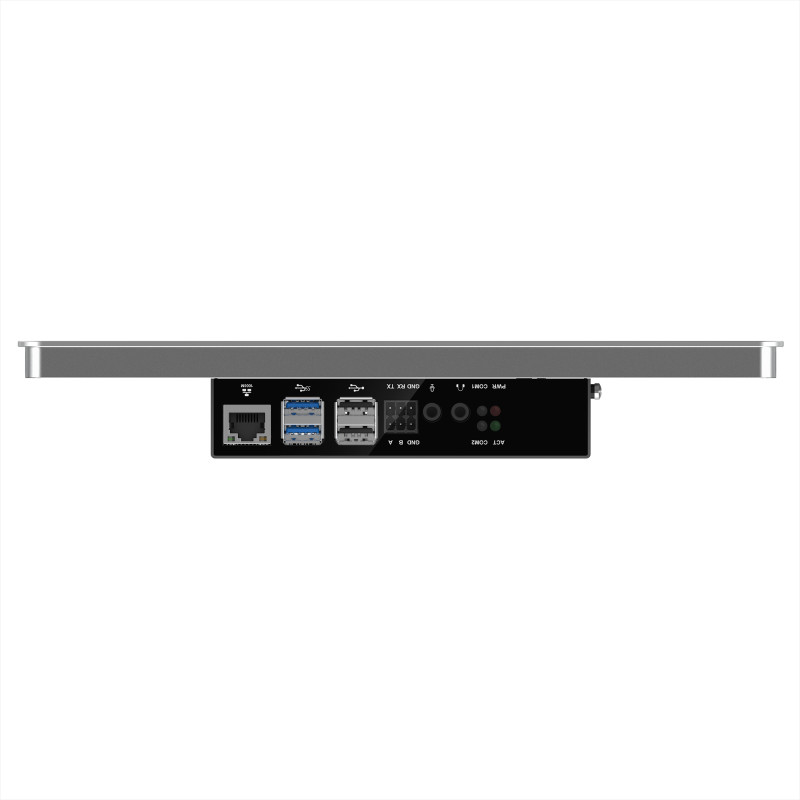An upgrade over the HMI3010 models, the HMI3020 adds RS232 and RS485 interfaces, as well as 3.5mm headphone and mic jacks. The key addition, however, is an M.2 socket. To access it, you’ll need to unscrew Raspberry Pi 5 and the case from the rear of the unit, then you can use the M.2 slot inside to add an NVMe 2230, 2242, or 2260 SSD.

Touch control
Our unit’s microSD card had Raspberry Pi OS Bookworm pre-installed with the drivers for the ten-point touchscreen, which worked instantly upon bootup. As we’ve found with other Raspberry Pi touchscreens, there’s no right-click functionality by default and we also couldn’t double-click files to open them (so had to enable one-click opening in the File Manager). There was no on-screen keyboard available either, though we managed to get one running with a workaround from the Raspberry Pi forums.
The EDI-HMI3020 also comes with an optional 8MP front-facing camera – a Camera Module V2 – for video conferencing and suchlike, making it a versatile touchscreen tablet.
Verdict
8/10
A robust touchscreen panel with well-protected Raspberry Pi 5 mounted on the rear and the option to add an M.2 SSD
Specs
Features: 10.1-inch screen with ten-point touch input, Raspberry Pi with 4GB or 8GB RAM, optional front-facing camera
Ports: 2 × USB 3.0, 2 × USB 2.0, 1 × USB-C power, 2 × micro-HDMi, Ethernet (with optional PoE), RS232 and RS485, M.2 SSD socket (internal)
Dimensions: 258 × 172 × 39.6mm; 1000g








